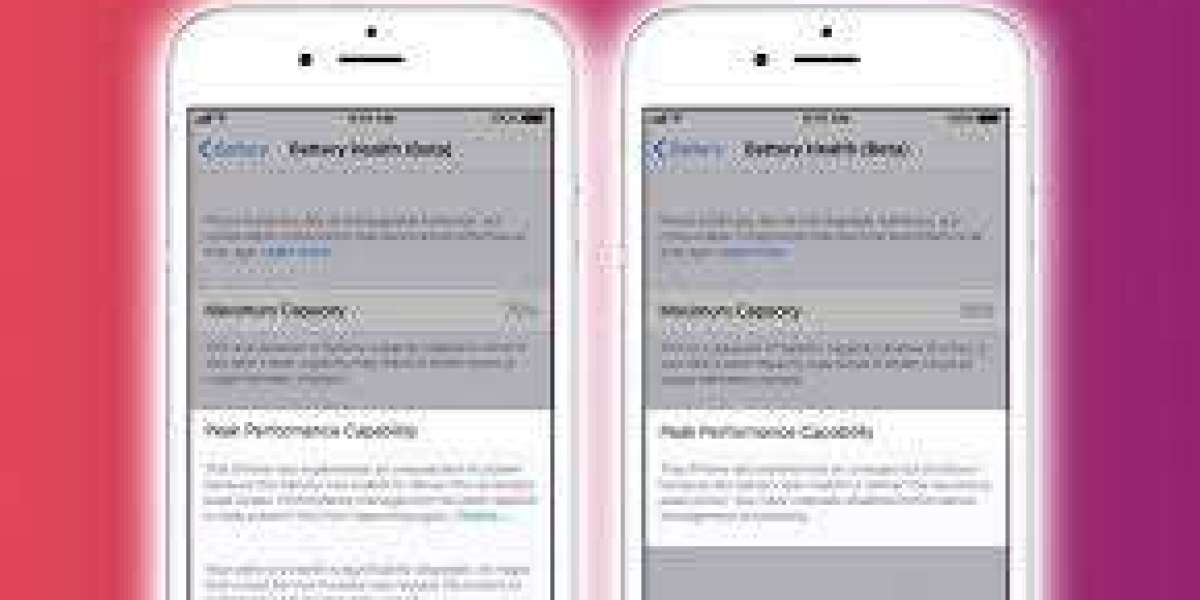In the age of high-performance mobile applications, one major challenge continues to affect both developers and users: thermal throttling. As mobile apps become more powerful, they demand more processing power, often leading to increased heat generation. To counteract this, Apple employs thermal throttling, which automatically reduces the device’s performance to prevent overheating. This is where the innovative work coming from iOS App Development Services in Austin shines—leveraging power efficiency algorithms to maintain performance without compromising temperature limits.
In this blog, we'll dive into the concept of thermal throttling on iOS devices, explore Austin's power efficiency innovations, and offer practical steps developers can take to ensure their apps are thermally optimized.
What is Thermal Throttling in iOS Devices?
Thermal throttling refers to the automatic reduction of CPU and GPU clock speeds when a device's temperature crosses a safe threshold. While it protects the hardware, it leads to degraded performance—lagging apps, slower frame rates, and battery drain.
Why Does iOS Employ Thermal Throttling?
Apple’s tightly integrated hardware-software ecosystem ensures device longevity and user safety. When an iPhone or iPad heats up due to resource-heavy applications, iOS reduces the performance to maintain:
Battery health
System integrity
User comfort
Device safety
How iOS Handles Thermal Events
Apple uses a tiered thermal state system, exposing various levels of system warnings to developers through thermal state notifications:
Nominal – Device is cool and working at full performance.
Fair – Slight increase in temperature; minor restrictions may start.
Serious – Noticeable heat; significant throttling to save power.
Critical – Device is overheating; app may be suspended or terminated.
Understanding this hierarchy allows software development companies to build apps that dynamically respond to thermal states, improving both performance and user satisfaction.
The Austin Advantage: A Hub of Innovation
Austin, Texas, often dubbed “Silicon Hills,” has become a powerhouse in the tech industry. iOS App Development Services in Austin are leading the charge in creating thermally aware, performance-optimized applications by harnessing power efficiency algorithms and advanced development practices.
Why Austin Is Ideal for Power-Efficient App Development
Proximity to Apple’s campus and engineers
Access to world-class software development talent
Innovative startups and established software development companies
Collaborations with research institutions like UT Austin
Austin’s Power Efficiency Algorithms: Revolutionizing iOS Performance
Let’s explore how developers in Austin are preventing thermal throttling with innovative solutions:
1. Dynamic CPU Load Distribution
By analyzing real-time CPU usage, apps can intelligently distribute tasks across high-efficiency and high-performance cores in Apple’s A-series and M-series chips. This helps:
Avoid overloading performance cores
Maintain optimal temperature
Increase app responsiveness
2. Intelligent Frame Rate Throttling
High frame rates (like 120Hz on ProMotion displays) significantly affect battery and temperature. Austin developers use adaptive frame rendering, which adjusts the frame rate based on:
User interaction intensity
App background status
Device thermal state
3. Background Task Optimization
Background activities like syncing or location tracking often go unnoticed but contribute heavily to heat. Developers leverage Apple’s Background Tasks framework to:
Schedule tasks at optimal system states
Delay non-critical operations during high thermal load
Use power-efficient dispatch queues
4. AI-Powered Thermal Monitoring
Leading software development companies in Austin are integrating machine learning models to predict when an app is about to trigger thermal throttling. These models analyze:
CPU/GPU usage patterns
Thermal logs from previous sessions
Battery consumption metrics
This predictive approach enables preemptive optimization, improving UX significantly.
How iOS App Developers Can Prevent Thermal Throttling
H2: Best Practices to Avoid iOS Thermal Throttling
Let’s break down the techniques developers can use—many of which are pioneered by iOS App Development Services in Austin:
1. Optimize Rendering Pipelines
Use Apple's Metal API for GPU-heavy tasks instead of OpenGL, as it provides better efficiency and lower overhead.
2. Avoid Unnecessary Background Processes
Remove redundant services, disable animations when not needed, and defer non-essential tasks when in Serious or Critical thermal states.
3. Use Instruments for Thermal Profiling
Xcode Instruments provides a Thermal State instrument that allows you to simulate various temperature levels and view the impact of your code.
4. Implement Graceful Thermal State Handling
Register for the notification NSProcessInfoThermalStateDidChangeNotification and implement handlers that gracefully reduce the app’s workload based on the thermal state.
5. Limit Use of Sensors and Continuous Data Streams
Components like GPS, camera, and real-time video processing can cause rapid heating. Optimize these features to only run when absolutely necessary.
Real-World Applications from Austin-Based Developers
Austin has birthed several applications that serve as role models for thermal-aware development. Here are a few examples (fictional for illustrative purposes):
1. FitTrack Pro
This fitness tracker, developed by an Austin firm, uses real-time thermal analytics to modulate sensor usage during workouts, preventing overheating during extended use.
2. StreamSafe
A video conferencing app that reduces video bitrate and frame rate when thermal state changes from Fair to Serious. It’s built by one of the most respected software development companies in the Austin region.
3. EduPlay AR
An AR-based educational app that dynamically adjusts AR features and visual fidelity in response to device heat levels—an innovation pioneered by a startup offering iOS App Development Services in Austin.
Collaborations and Research in Austin
Austin's rise as a tech development nucleus isn’t accidental. The city’s developers often collaborate with:
Apple Developer Labs
UT Austin Research Labs
Thermal optimization think tanks
These partnerships result in the early adoption of cutting-edge algorithms and best practices for mobile energy efficiency and thermal regulation.
The Business Advantage of Thermally Efficient Apps
Creating apps that minimize thermal throttling provides businesses with significant benefits:
1. Enhanced User Experience
Users quickly abandon apps that lag or overheat their devices. Power-optimized apps keep users engaged longer.
2. Better App Store Ratings
Performance issues related to heating can hurt reviews. Austin-developed apps often maintain 4.5+ star ratings due to superior optimization.
3. Extended Device Compatibility
Apps that handle power efficiently are more likely to run smoothly even on older devices—expanding your user base.
4. Lower Battery Complaints
By reducing heat and CPU cycles, apps improve battery life, reducing churn and increasing brand loyalty.
Future Trends in Thermal Optimization
1. Integration with Apple Silicon Innovations
As Apple’s chips become even more efficient, developers will need to fine-tune their apps to align with energy-efficient architectures.
2. Expansion of On-Device AI for Thermal Prediction
Expect to see more on-device ML models analyzing and predicting thermal performance in real-time.
3. Hardware-Aware Development
Tools that simulate various Apple devices with different thermal tolerances will become standard for quality testing.
Choosing the Right iOS Development Partner
If you're a business looking to develop high-performance, thermally-optimized applications, it’s essential to work with professionals who understand Apple’s frameworks and hardware constraints.
Why Choose iOS App Development Services in Austin?
Expertise in energy-efficient algorithms
Access to Apple developer resources
Proven track record with high-performance apps
Real-time collaboration and testing facilities
Leading software development companies in Austin prioritize not just functionality but sustainability and performance longevity in their apps.
Conclusion
In today’s competitive app landscape, performance isn't just about speed—it’s about sustained, safe, and efficient operation. With the threat of thermal throttling, developers must adopt a forward-thinking approach to power efficiency.
Thanks to groundbreaking innovations from iOS App Development Services in Austin, the path toward sustainable mobile app performance is clearer than ever. Whether you’re a startup or an enterprise, embracing these practices will ensure your app stays cool—literally and figuratively.
Invest in thermal-conscious development today—your users (and their devices) will thank you.


